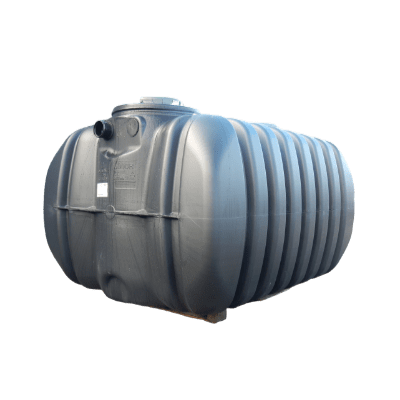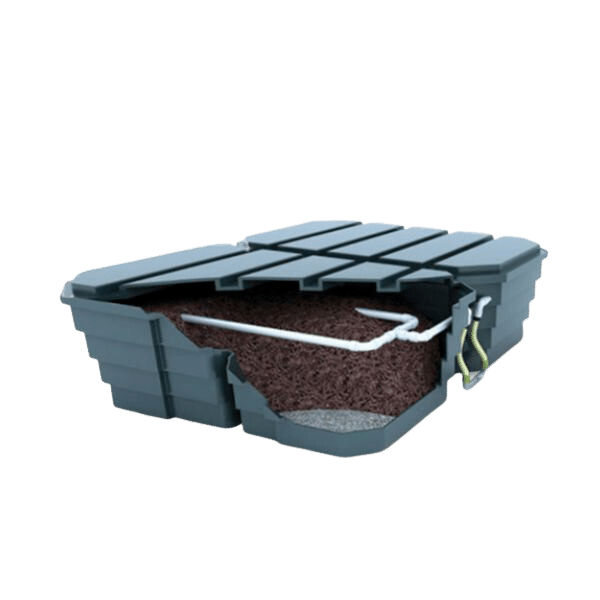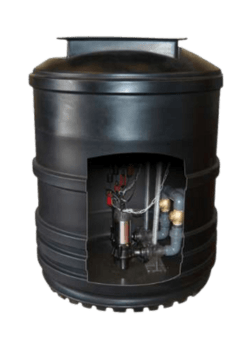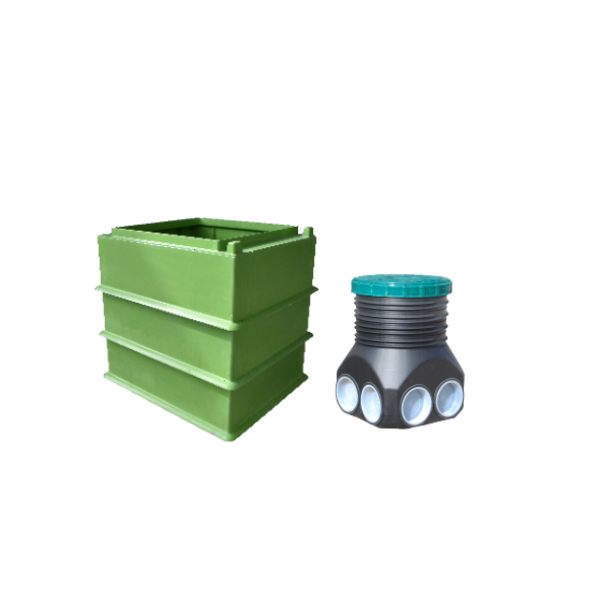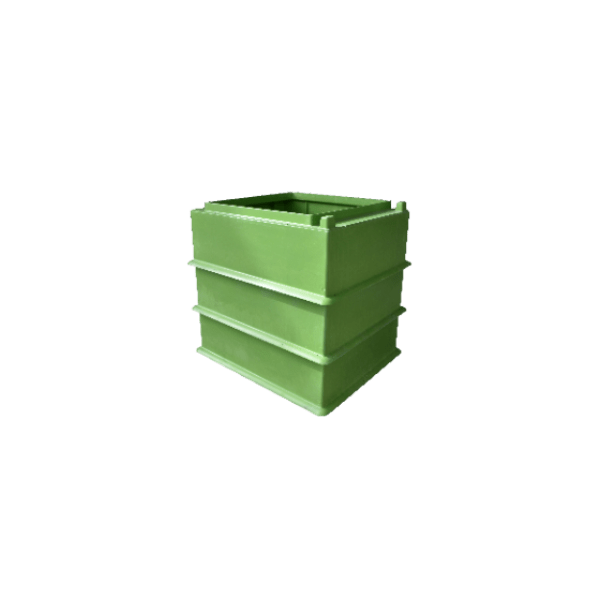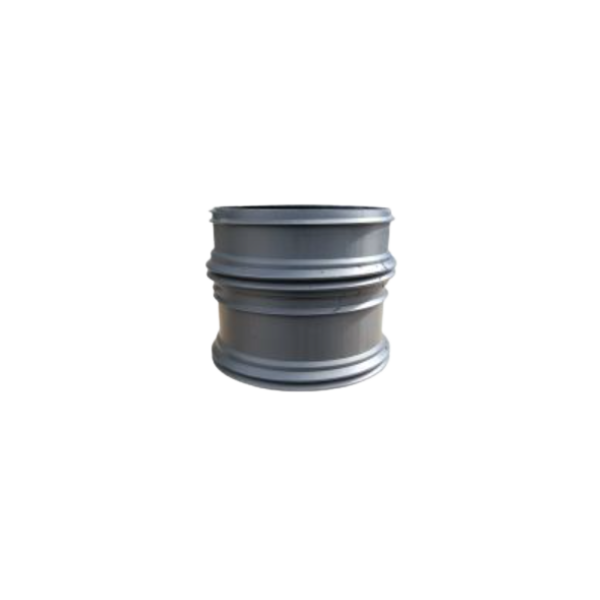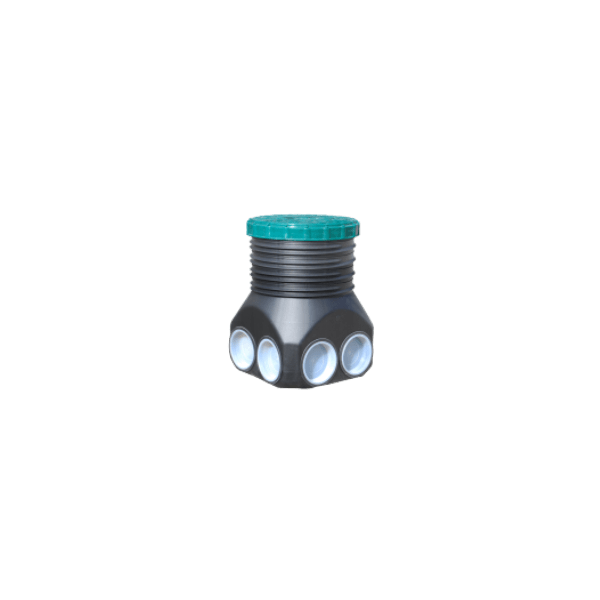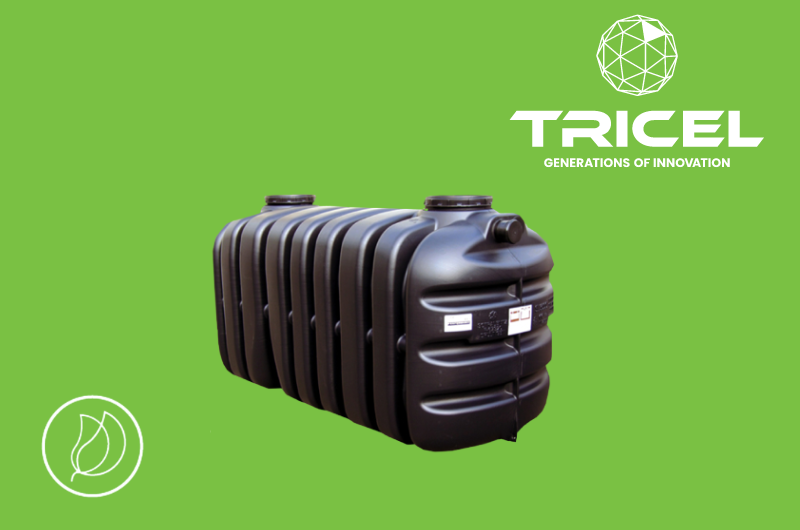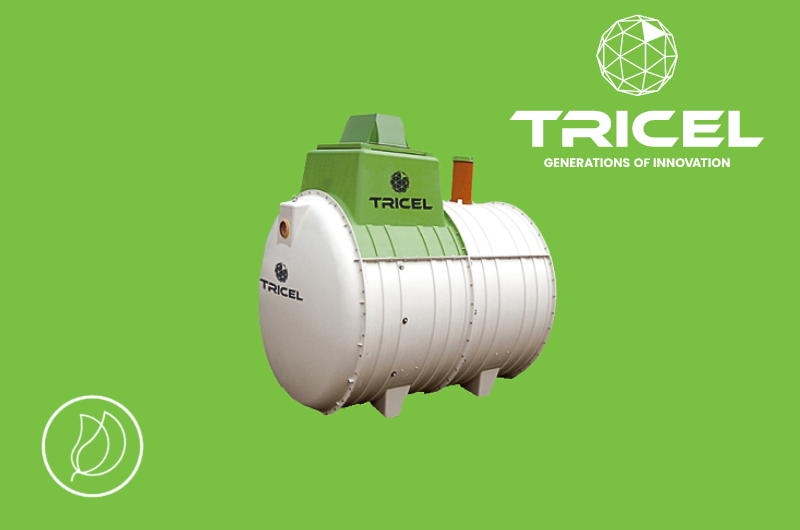SEWAGE TREATMENT
treatment plant vs septic tank
OVERVIEW
In the UK, homeowners that can’t connect to the main sewers have the legal obligation to have a system on their property that filters and discharges waste in a non-polluting way. In short, you’ll need either a septic tank or a sewage treatment plant (aka wastewater treatment plant). This article will talk about treatment plant vs septic tank.
Most of the time, we recommend that homeowners opt for treatment plants. Find out why by reading on.
Table of Contents
Domestic wastewater treatment plant vs septic tank – which one to choose?
What is the difference between a septic tank and a sewage treatment plant?
Sewage treatment plants treat wastewater in a more sophisticated and advanced way than septic tanks, resulting in higher quality effluent.
Gravity separates liquid and solid waste in septic tanks. By contrast, wastewater treatment systems use either aerated technology (air blowers) like in the Tricel Novo or mechanical components to introduce aerobic bacteria, which break down the waste.
There is one significant difference between a sewage treatment plant and a septic tank for homeowners: sewage treatment plants can discharge into watercourses (e.g. rivers and streams), while septic tanks cannot. This is due to the low quality of effluent; septic tanks are considered polluting.
Key features of a septic tank
- Solid and liquid waste are separated
- Liquid waste is not treated
- No electrical requirements
- Frequently needs to be emptied
- Service requirements are lower than for a treatment plant
- Discharges into watercourses are prohibited
Main features of a sewage treatment plant
- Solids and liquids are separated
- Ensures a higher quality of effluent by treating liquid waste
- The air blower (and sometimes pump) requires a power supply.
- You need to Desludge, but less frequently than with a septic tank
- It requires more maintenance and servicing than a septic tank
- Discharges into watercourses are allowed – make sure to check local regulations
IF YOU NEED MORE INFORMATION
Call us now to talk about your project and we will answer your questions or concerns.
ASK FOR A QUOTE
Request a free quote today to have a quote that meets your project!
What are the main benefits of a sewage treatment plant?
In England and Wales, septic tanks cannot discharge directly into watercourses, such as rivers and streams, due to government changes to regulations in 2020. You need to discharge it into a drainage field or to connect it to a public sewer. Therefore, most homeowners choose sewage treatment plants.
Do you need to upgrade your septic tank with a sewage treatment plant?
Septic tanks and sewage treatment plants from Tricel:
At Tricel, we offer a wide range of septic tanks and wastewater treatment plants to suit your site and needs. Contact us today to discuss your project.MEET OUR TEAM
To find a technician in your area, visit our page
TALK SEWAGE TREATMENT
To speak to one of our agents online, click here
ASK FOR A QUOTE
Request a free quote today to have a quote that meets your project!
Tricel Novo: Key features & benefits
The compression moulding process is one of the most technologically advanced features available on the market. Components are manufactured under heat and high pressure. They have a competitive strength and durability over standard GRP tanks or PE tanks.
SMC is a unique material in the sewage treatment industry with Tricel SMC tanks operating in some of the harshest climatic conditions for over 50 years with no defects.
Tricel’s ceramic diffuser will last twice as long as all standard competitors rubber equivalents. It is a cost-saver in both call out fees and replacement parts.
No concrete backfill for installation on most sites which allows you to save up to €400 over lower quality GRP/plastic competitors.
There are no moving parts or pumps in the plant which is ensuring reliable operation during the treatment process and minimal running costs.
Tricel Novo plants are designed with a shallow invert to limit both installation and time costs.
Tricel product range
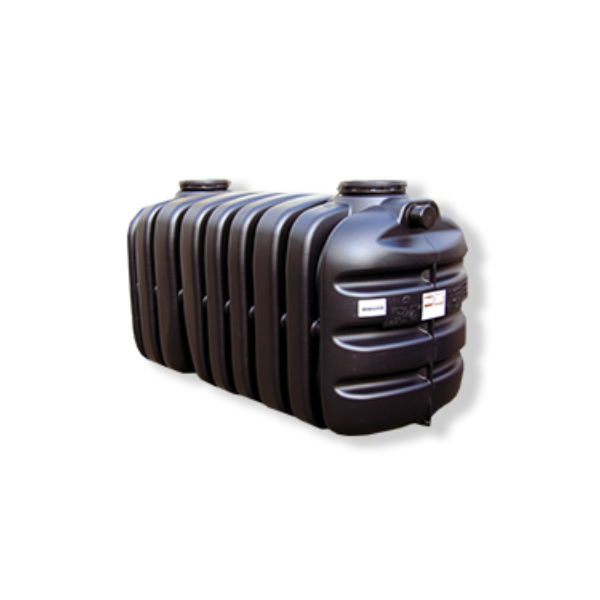
Tricel Vento Septic Tank
Shallow dig tank, strong & robust underground tank, No electrical or moving parts. Ideal for sites with good drainage & plenty of space.
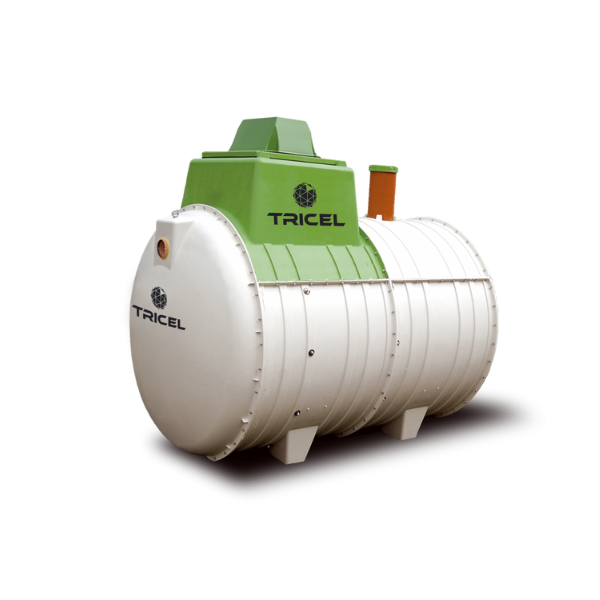
Tricel Novo Sewage Treatment Plant
Durable & long lasting SMC tank, shallow dig tank, easy installation (Plug and Play), long life components.
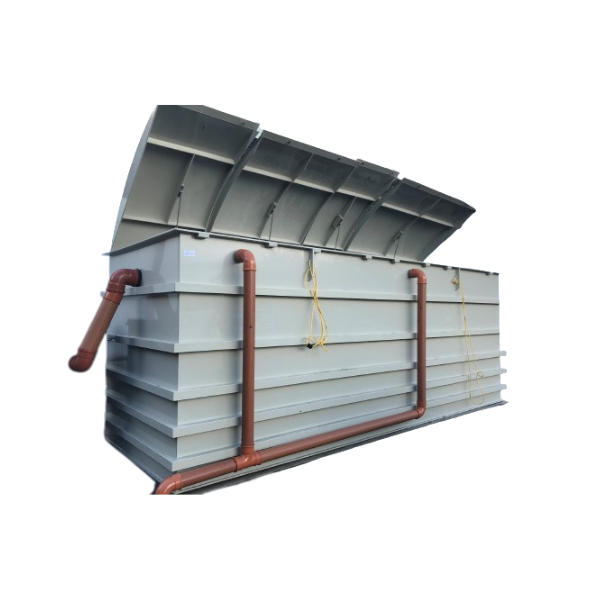
Tricel Maxus Sewage treatment Plant
Commercial plant. Submerged Aerated Filter (SAF) technology. Ideal for every project over 50 Population Equivalent.
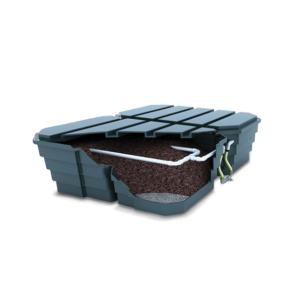
Tricel Puraflo Packaged filter
Ideal for sensitive sites, compliant to British Standard, small footprint.
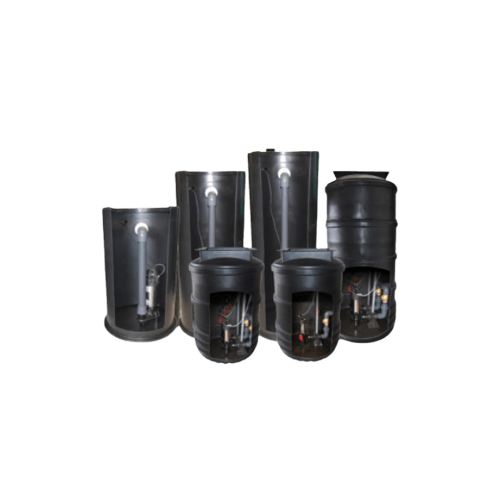
Tricel Pumping Stations
Pump fluids from one place to another where gravity drainage cannot be used, easy and trouble-free installation
Key Features

Fast Delivery
Fast delivery + Rapid response to all our customers

Certified
Tricel Products are certified to EN12566-1 and EN 12566-3 certified

Technical expertise
Unrivalled technical expertise by our sales team regarding wastewater treatment solutions
Frequently Asked Questions
WHAT IS THE DIFFERENCE BETWEEN A CESSPOOL, A SEWAGE TREATMENT PLANT AND A SEPTIC TANK?
A cesspool is a simple storage vessel with an inlet and no outlet. It’s a sealed storage vessel; all the water coming in stays within the tank. The advantage is it doesn’t need an outlet. The disadvantages are: there is no treatment, the tanks are huge, and it needs regular emptying. You need to suck out everything which has gone in. Ideal for sites which have got very infrequent use (Sheppard huts, for example).
Septic tank
A septic tank has an inlet and an outlet; it’s a simple overflow system. See how a septic tank works here. The advantages of the septic tank are there is no mechanic and no electricity requirement for it to work. Disadvantages are you are discharging dirty water, and untreated sewage effluent, as a tiny breakdown has occurred in the tank. You can only release water to a drainage field for the water to go through the subsoil to treat the water.
Sewage treatment
A sewage or package treatment plant has an inlet and an outlet; we treat the wastewater inside the tank. We provide aeration inside the tank for the aerobic bacteria to feed on the waste and remove it from the liquid. The advantages are you treat and can discharge wastewater to a watercourse.
Many package treatment plants are available on the market:
- Trickles filters
- Rotating Biological Contactors (RBC)
- Mobile media bio-reactors
- Activated Sludge systems
- Sequence Batch Reactor systems (SBR)
- Fixed Bed Systems (like the Tricel Novo)
WHAT IS DOMESTIC WASTEWATER?
Domestic wastewater is all wastewater that the inside of a house generates, including grey water from sinks, showers, baths and sewage from toilets. Rainwater is not classified as greywater and should be directed to a soakaway.
HOW CAN I TELL IF I HAVE A HIGH WATER TABLE?
A trial hole can be dug during the site assessment and left open for 48 hours to determine this. The ground level is used to measure the water level.
DOES THE TREATED WATER HAVE TO GO TO A DRAINAGE FIELD WHEN DISCHARGED?
After discharging water, it must flow into a drainage field or a running watercourse. It will fail and block up very quickly whenever it is released directly into the ground. It will also violate the government’s General Binding Rules for small sewage discharges—more information on this page.
Get in touch
